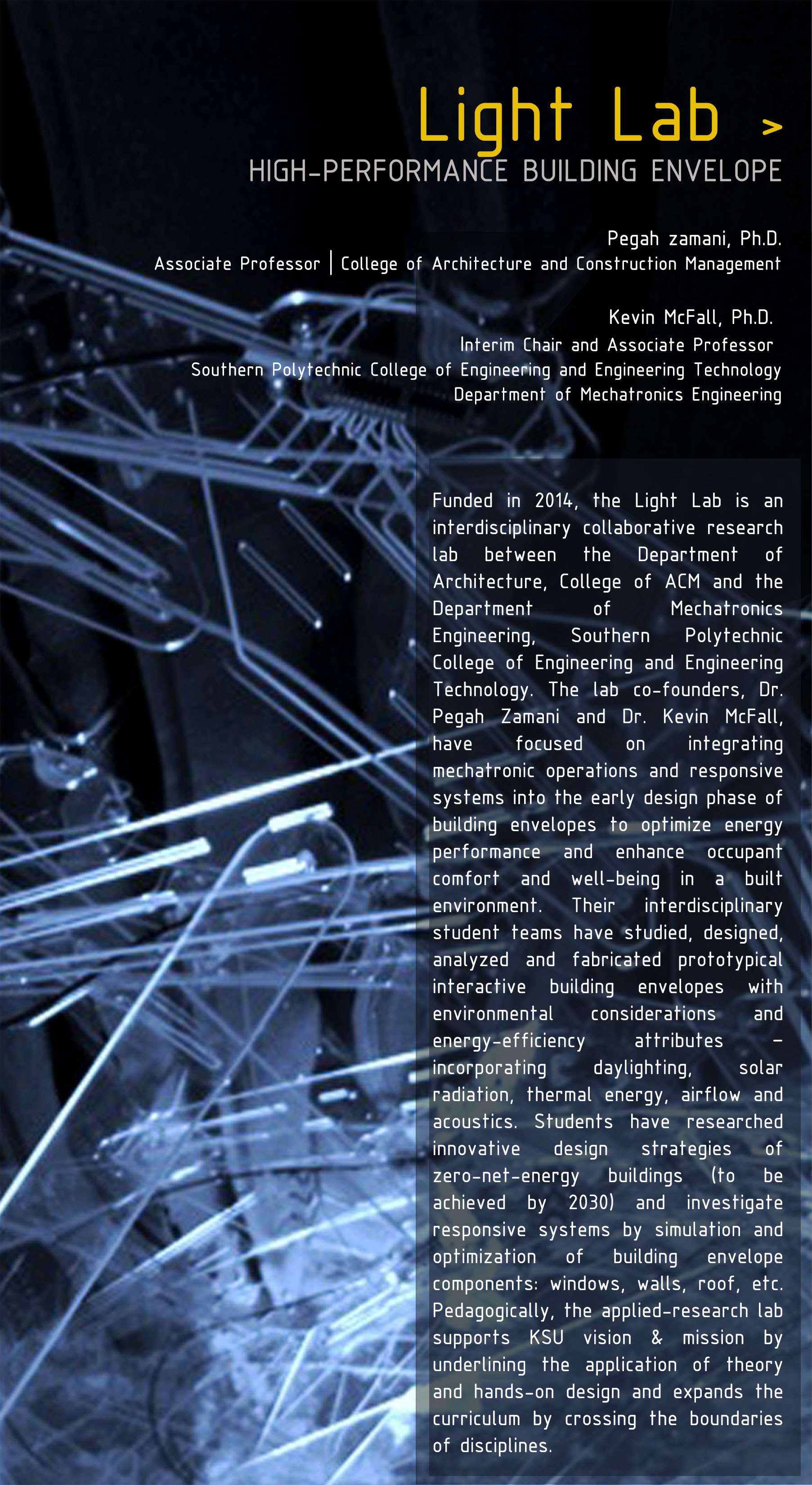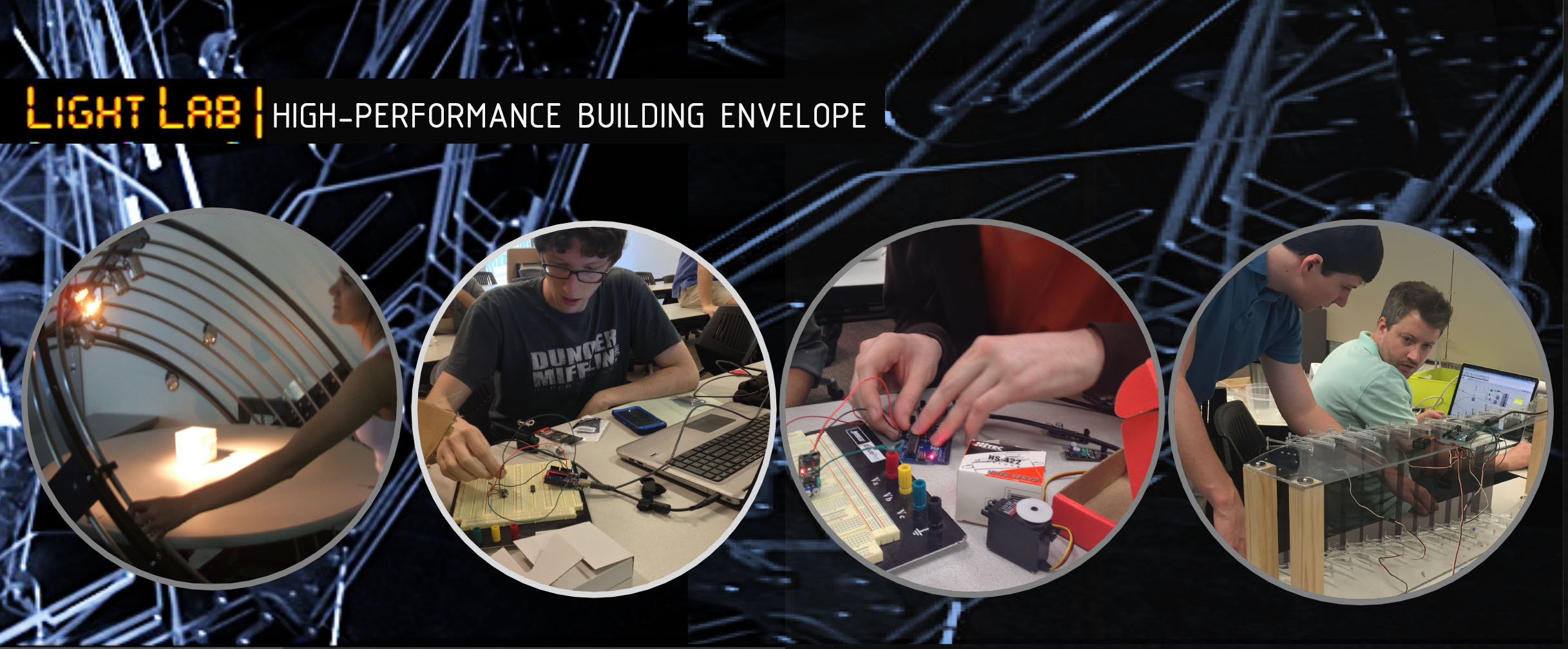Light Lab: High-Performance Building Envelope
Interdisciplinary collaborative research lab focuses on energy efficiency of buildings
MARIETTA, Ga. (Oct 1, 2019) — The Light Lab, funded in 2014 by a university mini-grant for project-based learning, is an interdisciplinary collaborative research lab between the Department of Architecture in the College of Architecture and Construction Management and the Department of Mechatronics Engineering in the Southern Polytechnic College of Engineering and Engineering Technology at Kennesaw State.
Lab co-founders Pegah Zamani, associate professor of architecture, and Kevin McFall, interim chair and associate professor of mechatronics engineering, have focused on integrating mechatronic operations (in which the principles of mechanics, electronics, and computing are united to generate a simpler, more economical and reliable system) and responsive systems into the early design phase of building envelopes to optimize energy performance and enhance occupant comfort and well-being in a built environment. A building envelope is the physical separator between the conditioned and unconditioned environment of a building, including the resistance to air, water, heat, light, and noise transfer.
Their interdisciplinary student teams have studied, designed, analyzed and fabricated
prototypical  interactive building envelopes with environmental considerations and energy-efficiency
attributes - incorporating
interactive building envelopes with environmental considerations and energy-efficiency
attributes - incorporating
- daylighting,
- solar radiation,
- thermal energy,
- airflow, and
- acoustics.
Students have researched innovative design strategies of zero-net-energy buildings (to be achieved by 2030) in which the total amount of energy used by the buildings on an annual basis is equal to the amount of renewable energy created on the sites. They also investigate responsive systems by simulation and optimization of building envelope components: windows, walls, roof, and so on.
Zamani said that the applied-research lab supports KSU's vision and mission by underlining the application of theory and hands-on design and expands the curriculum by crossing the boundaries of disciplines.












